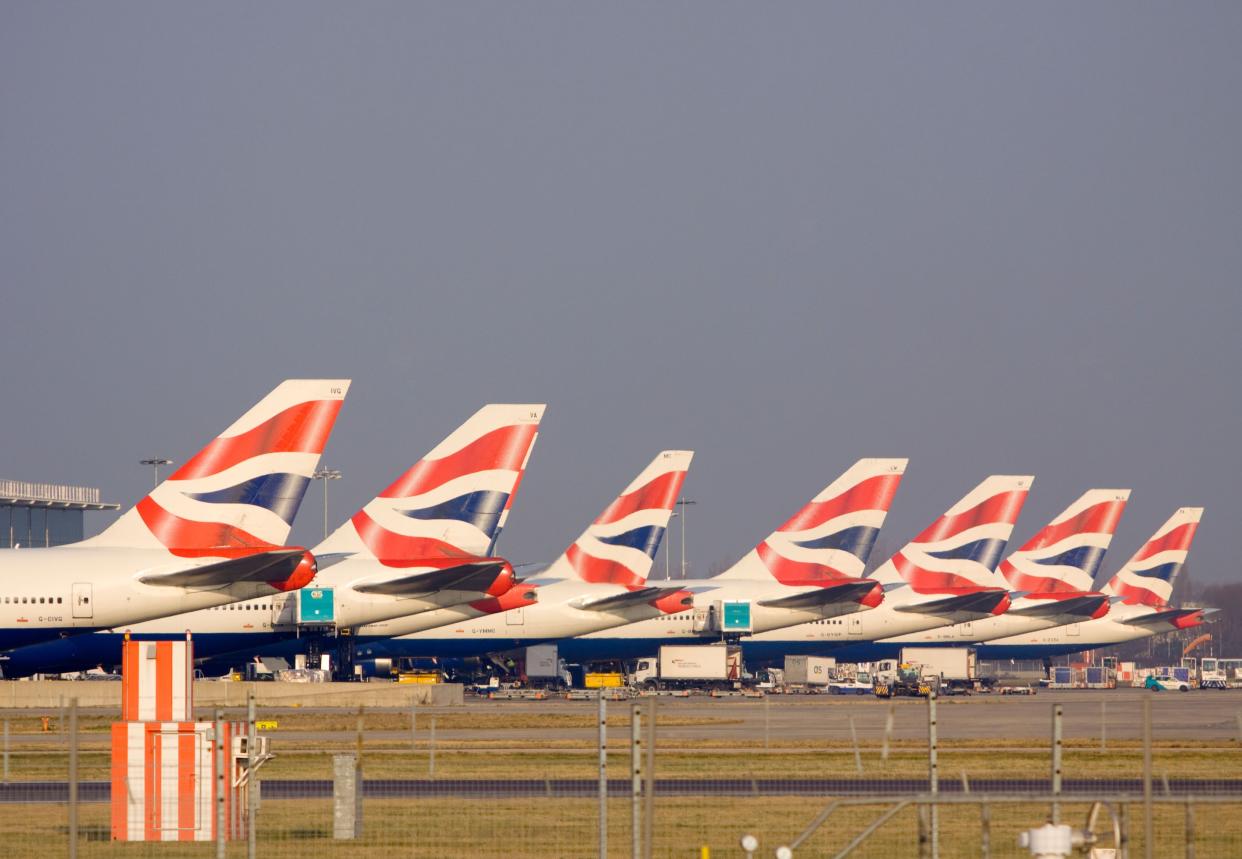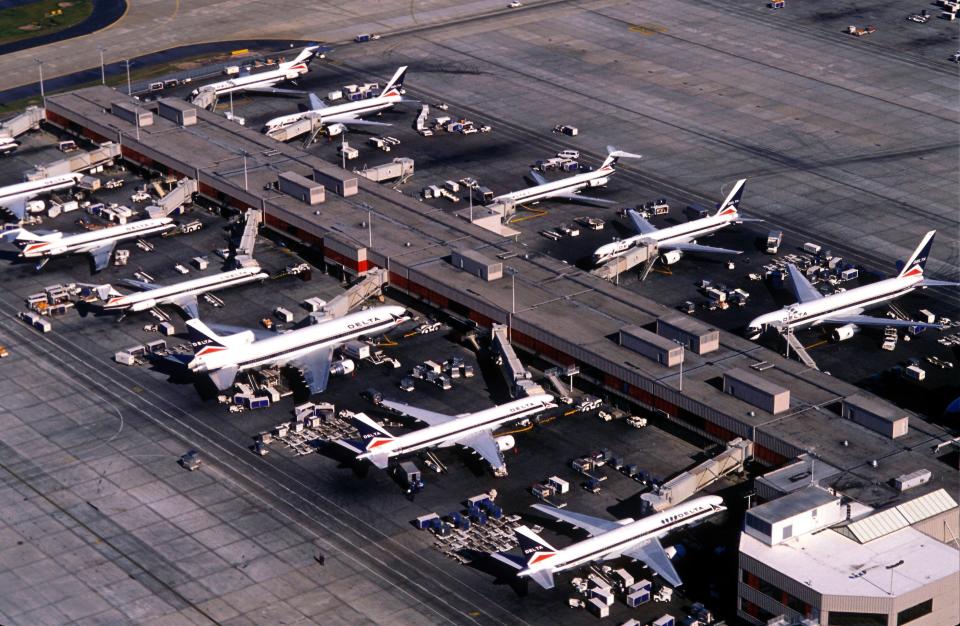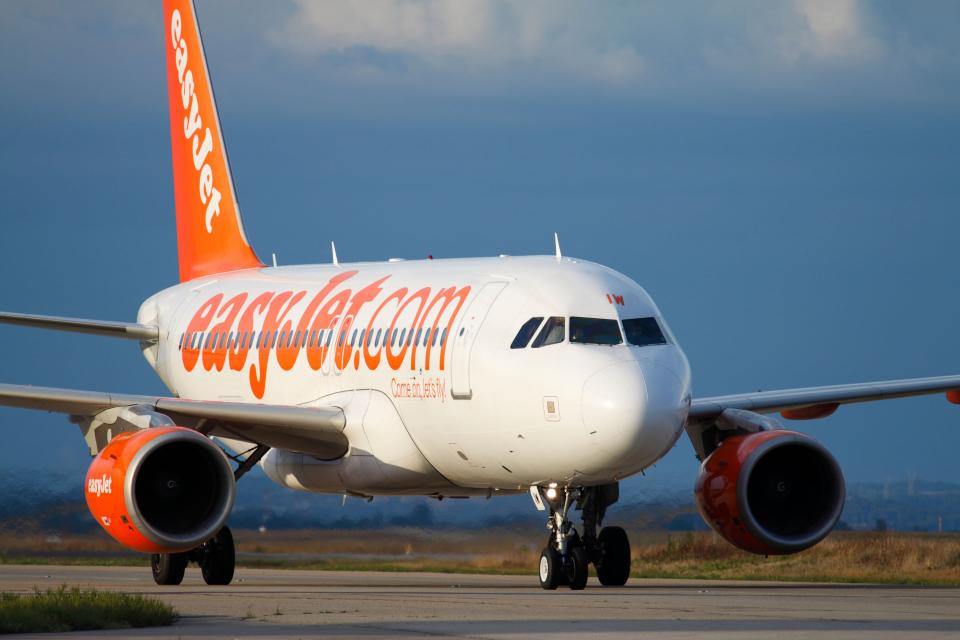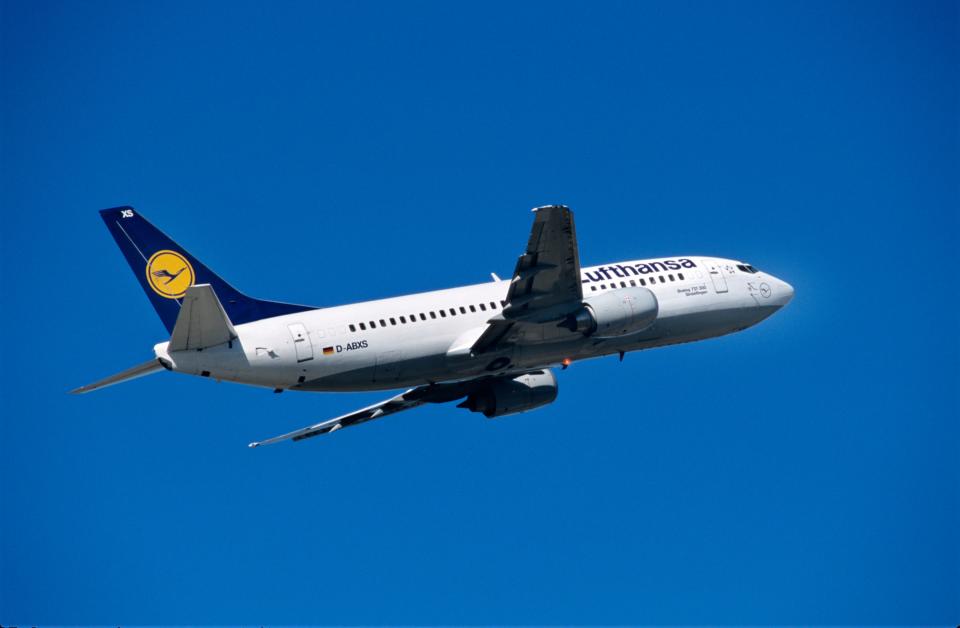How many planes are there in the world right now?

Humans beings have only been travelling by air for just over 100 years but we’ve already filled the heavens.
Step outside and look up on a clear day and (presuming you don't live in a remote corner of the country) you’ll probably see the criss-crossing contrails that have become a feature of the modern skyscape.
This year commercial aircraft will carry nearly four billion passengers, according to the International Air Transport Association (IATA), nearly double the number of just 12 years ago, and equivalent to half of the world’s population (though the number represents individual journeys rather than unique passengers).
And to cater for this meteoric rise in commercial aviation, the industry needs more and more aircraft - more 737s, more A320s, more planes. As if there weren’t already enough.

How many planes are there?
The question is clearly not a simple one. Despite registration and manufacturing figures, keeping track of every aircraft in the world is not an easy task.
According to aviation analysts Ascend, the total number of aircraft currently in service is approximately 23,600 - that includes passenger and cargo aircraft. It reckons there are 2,500 more in storage.
Another estimate on aviation enthusiast website airliners.net inludes all commercial and military planes (but not light aircraft) claims that there are some 39,000 planes in the world - and that over the course of history, there have been been more than 150,000.
How many are needed?
So quite a lot of aircraft - but not nearly enough.
The International Civil Aviation Organisation (ICAO), a UN body, says that the “global air transport network” doubles in size at least once every 15 years, and that it’s expected to do so again by 2030.
Boeing, one of the world’s biggest aircraft manufacturer, agrees. It says that there is a need for 39,620 new planes over the next 20 years, so by 2037 there should be 63,220 aircraft in the world - minus older ones that slip out of service.
“Our forecast is based on a combination of airline growth and replacement of older, less efficient airplanes,” a spokesperson said. “There’s no doubt passenger demand will continue to grow at a healthy clip."
Who’s building them?
Mainly Boeing and Airbus, the two largest manufacturers, with respective annual revenues of $90billion and $81billion (as of 2014).
The two, responsible for the majority of commercial aircraft, race each year to shift the most units - in 2016 Airbus delivered 688 aircraft next to Boeing’s 748. As of the end of July, Airbus had orders for more than 17,000, mostly its A320 model, while Boeing’s backlog is 5,705.

Toulouse-based Airbus and Boeing in Seattle indulge in healthy competition. Speaking at an event in January, Airbus’s chief operating officer John Leahy said: “How intense is the rivalry? Not as intense as Coke and Pepsi, but it’s still pretty intense.”
Boeing’s most popular model is the 737, of which more than 9,600 (including variants) have been built since 1967, while the Airbus A320 family has notched up 7,696 members since 1988. They are the two most produced commercial aircraft of all time. In third place is the Boeing 777.

The aircraft to have rolled off the production line most of all is the humble Cessna 172, a four-seater light aircraft. More than 44,000 have been built since its introduction in 1956. There are plenty other light aircraft on this list, as well as military machines, such as the Messerschmitt (35,000 built between 1936 and 1958).
Who has the most planes?
Who’s hogging all the aircraft? Taking figures from June last year, the clear leader is American Airlines with a fleet size of 1,789 (including those operated by regional partners). The top five is made up entirely of US carriers. Ryanair is in tenth place, with 398 planes.
How many planes are in the air at any one time?
According to the chaps at FlightRadar24, who keep track of aircraft around the world, the number varies based on the time of day and year. “If we’re talking about peak traffic for the whole year, a Friday afternoon between 2pm and 4pm (UTC - coordinated universal time) in July or August will see slightly more than 16,000 flights in the air,” said Ian Petchenik, from the company. “The same time period in January or February will see about 13,000 flights in the air.”
And how many have disappeared?
Between 1948 and 2014, 85 aircraft have vanished without a trace, according to the Aviation Safety Network. Of those, 26 were passenger jets; 59 were lost at sea, while 26 went missing over land.
The most example in recent history is of course Malaysia Airlines Flight 370. The hunt for the vanished plane was called off last month after three years searching in vain.
In a joint statement, Malaysia, Australia and China said an underwater search spanning 46,000 square miles in the southern Indian Ocean has been completed. But the plane, which was carrying 239 passengers, has not been found.
More Travel Truths
Would you be told if your plane was going down?
'Chemtrails' and other aviation conspiracy theories
What happens if you open the plane door during a flight?
Airline pilot secrets
What can you get away with stealing from hotels?
What happens to items lost at airports?
How to get an airline upgrade
Which is the safest seat on an aircraft?
What causes turbulence, and is it dangerous?
Does the brace position save lives?

